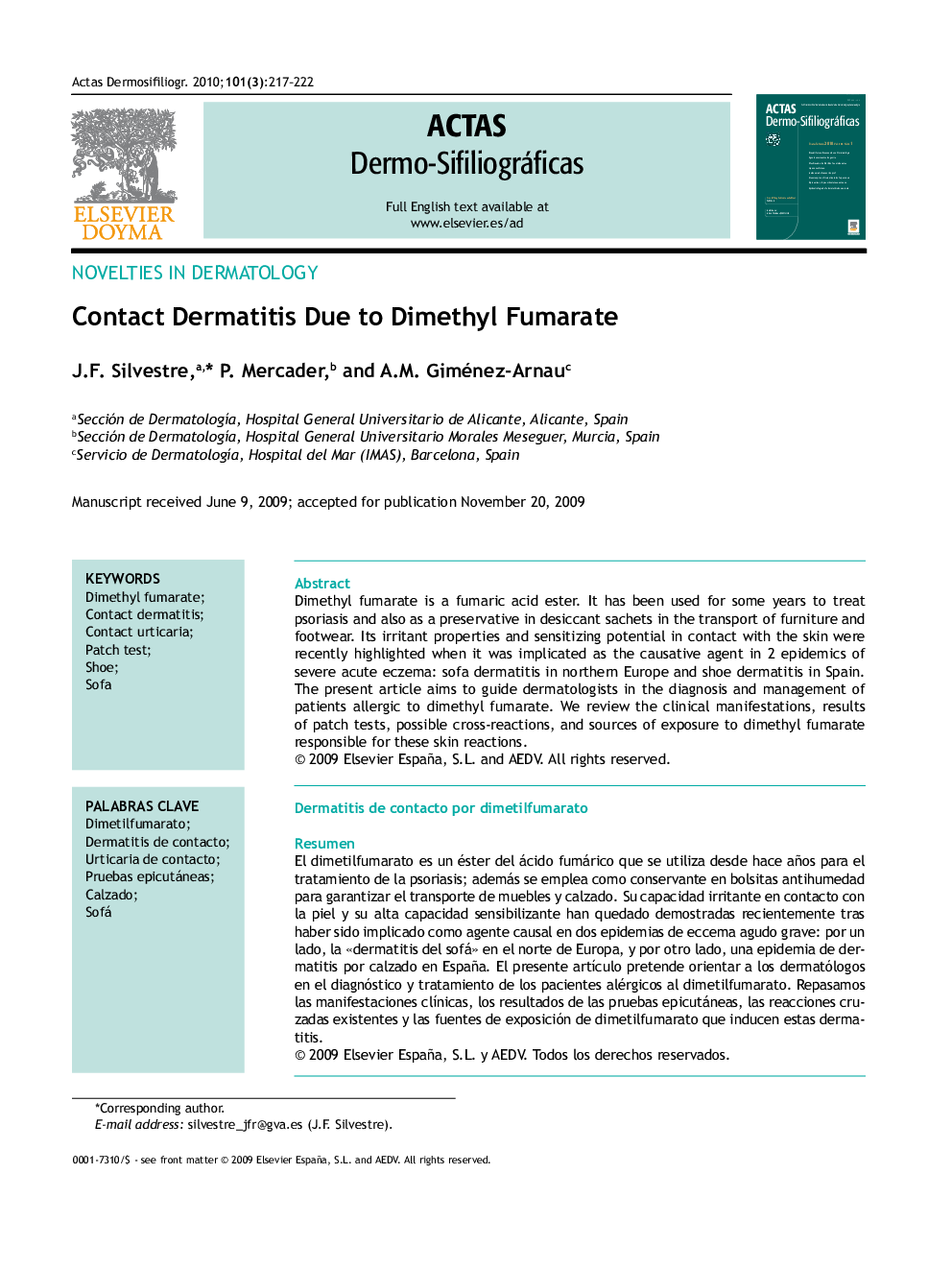| کد مقاله | کد نشریه | سال انتشار | مقاله انگلیسی | نسخه تمام متن |
|---|---|---|---|---|
| 3183125 | 1200685 | 2010 | 6 صفحه PDF | دانلود رایگان |

Dimethyl fumarate is a fumaric acid ester. It has been used for some years to treat psoriasis and also as a preservative in desiccant sachets in the transport of furniture and footwear. Its irritant properties and sensitizing potential in contact with the skin were recently highlighted when it was implicated as the causative agent in 2 epidemics of severe acute eczema: sofa dermatitis in northern Europe and shoe dermatitis in Spain. The present article aims to guide dermatologists in the diagnosis and management of patients allergic to dimethyl fumarate. We review the clinical manifestations, results of patch tests, possible cross-reactions, and sources of exposure to dimethyl fumarate responsible for these skin reactions.
ResumenEl dimetilfumarato es un éster del ácido fumárico que se utiliza desde hace años para el tratamiento de la psoriasis; además se emplea como conservante en bolsitas antihumedad para garantizar el transporte de muebles y calzado. Su capacidad irritante en contacto con la piel y su alta capacidad sensibilizante han quedado demostradas recientemente tras haber sido implicado como agente causal en dos epidemias de eccema agudo grave: por un lado, la «dermatitis del sofá» en el norte de Europa, y por otro lado, una epidemia de dermatitis por calzado en España. El presente artículo pretende orientar a los dermatólogos en el diagnóstico y tratamiento de los pacientes alérgicos al dimetilfumarato. Repasamos las manifestaciones clínicas, los resultados de las pruebas epicutáneas, las reacciones cruzadas existentes y las fuentes de exposición de dimetilfumarato que inducen estas dermatitis.
Journal: Actas Dermo-Sifiliográficas (English Edition) - Volume 101, Issue 3, May–June 2010, Pages 217-222